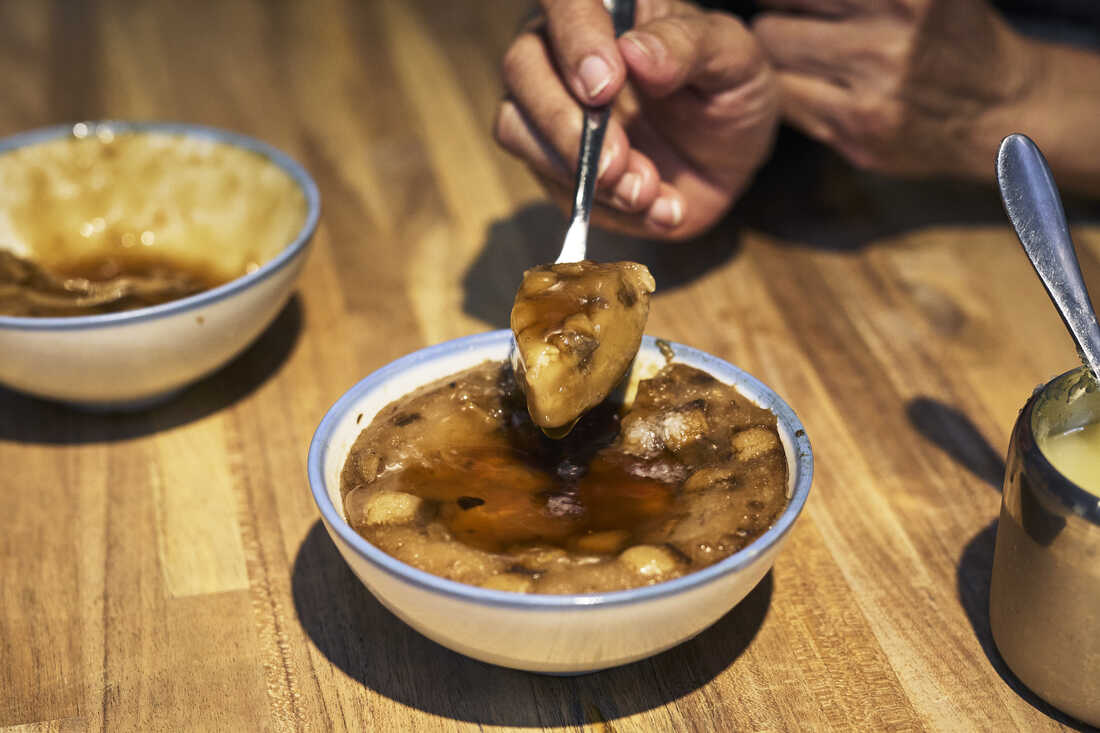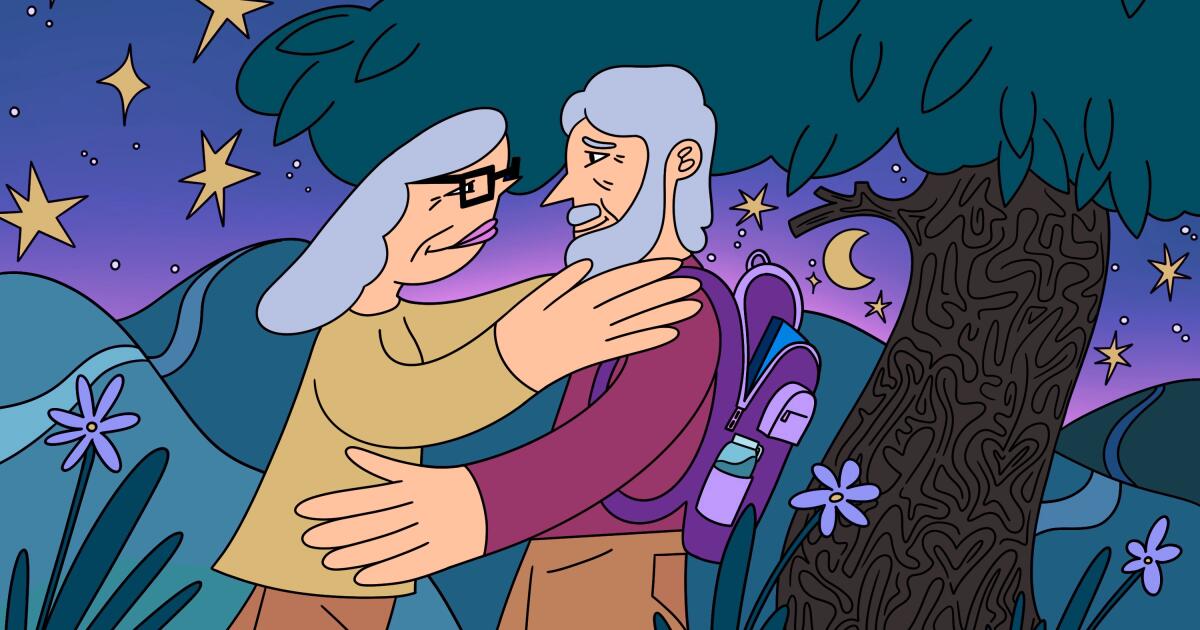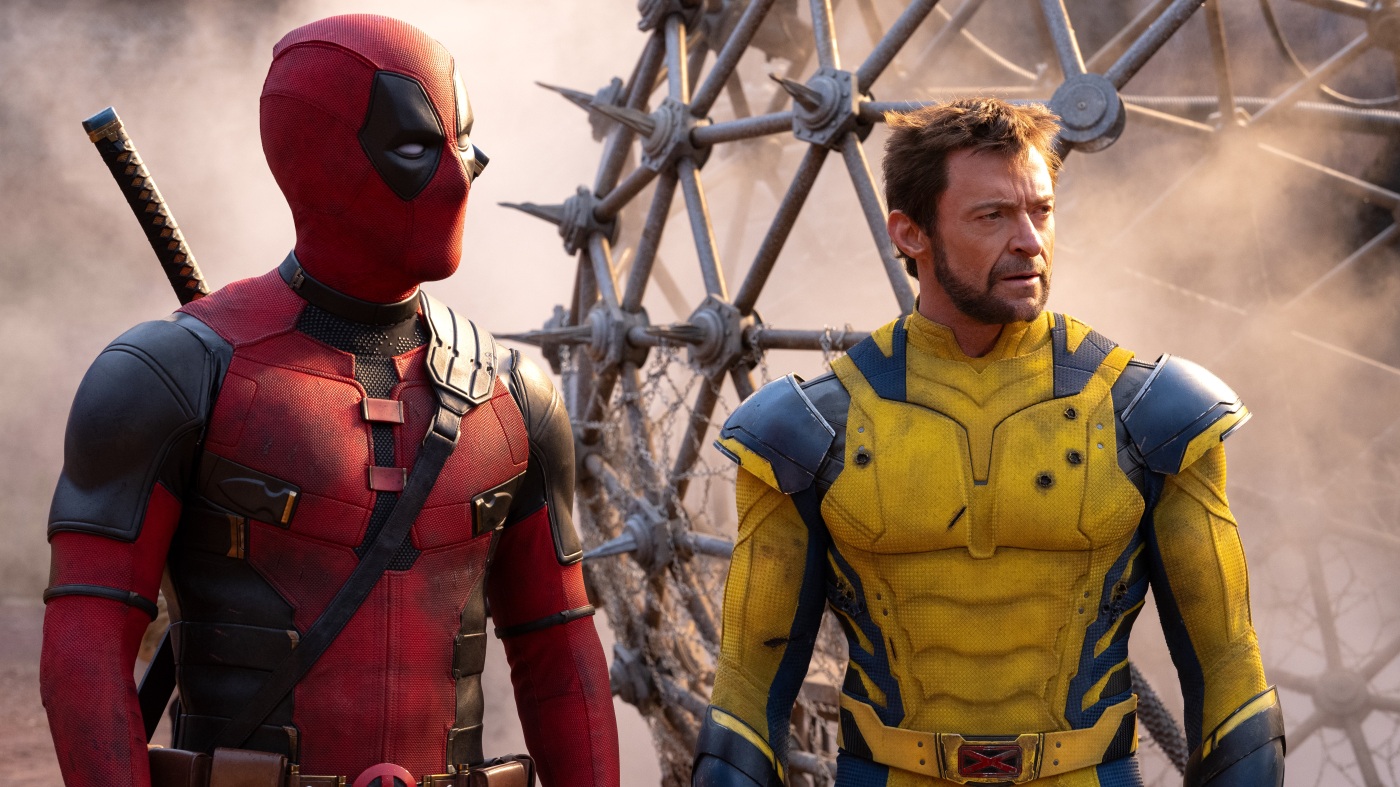Lifestyle
Feast your eyes on Taiwan's distinct food (and understand a history of colonization)

Ivy Chen (left) and Clarissa Wei browse Shuixian Gong Market in Tainan, Taiwan, in January.
An Rong Xu for NPR
hide caption
toggle caption
An Rong Xu for NPR

Ivy Chen (left) and Clarissa Wei browse Shuixian Gong Market in Tainan, Taiwan, in January.
An Rong Xu for NPR
TAINAN, Taiwan — On a Friday morning in the southern city of Tainan, Shuixian Gong Market overflows with displays of shiny orange and silver fish, stacks of glistening pork ribs and crates of dragon fruit and guavas. Vendors wash out their stands with hoses, and Taiwanese cooks ask for parcels of raw drumsticks or breasts. People on motorized scooters ride carefully through the market’s corridors, laden with bags of dried goods.
It’s easy to think of Taiwanese food as a subset of Chinese food — after all, the island’s food shares many culinary traditions and techniques with those from mainland China. Yet Clarissa Wei and Ivy Chen would argue that Taiwanese food is distinct. They’re the creators of the cookbook Made in Taiwan.
That title declares something: Even though about 90% of people in Taiwan have Chinese ancestry, they have forged a cuisine that is, in many ways, their own.

A set of traditional Taiwanese cuisine staples: oyster omelet, lu rou fan, oyster soup and fish ball soup.
An Rong Xu for NPR
hide caption
toggle caption
An Rong Xu for NPR

A set of traditional Taiwanese cuisine staples: oyster omelet, lu rou fan, oyster soup and fish ball soup.
An Rong Xu for NPR

Fresh seafood is sorted at Shuixian Gong Market.
An Rong Xu for NPR
hide caption
toggle caption
An Rong Xu for NPR

Fresh seafood is sorted at Shuixian Gong Market.
An Rong Xu for NPR
“Taiwanese food is quite distinct in that we have our own pantry items that are made in and unique to Taiwan,” Wei says. “So the way that soy sauce and rice wine and rice vinegar are made in Taiwan are not made similarly elsewhere in the world.”
Another key difference: Taiwanese food is sweet. In Tainan, which used to be a sugar-cane-producing hub, it’s even more pronounced.
Chen also points out that Taiwanese food doesn’t tend to rely on a lot of spices. “When our ancestors moved here, they found we have so many fresh ingredients in this small island, so it’s very easy to get food very fresh, so we don’t over-season it,” she says.
These differences are all products of Taiwan’s unique history.
“Taiwanese food is, I would say, a combination of all of our waves of colonization and governance,” Wei says.

Dried goods on sale at Shuixian Gong Market.
An Rong Xu for NPR
hide caption
toggle caption
An Rong Xu for NPR

Dried goods on sale at Shuixian Gong Market.
An Rong Xu for NPR

Vendors at Shuixian Gong Market.
An Rong Xu for NPR
hide caption
toggle caption
An Rong Xu for NPR

Vendors at Shuixian Gong Market.
An Rong Xu for NPR
Take sugar. In the 1600s, the Dutch came to southern Taiwan, where they established a couple of forts and the sugar cane industry, bringing Chinese farmers to help raise the crops. During Japanese occupation from the late 1800s through World War II, Taiwan was Japan’s main source of sugar production.
“At one point, two-thirds of all Taiwanese families were in the sugar cane industry,” Wei says. “So it was a huge part of our culture.”
Sugar is so important in Taiwan that it shows up even in its savory dishes, like Taiwanese sausages or braised pork over rice. It’s also a key ingredient in some of the island’s religious offerings, like ang ku kueh, or “red turtle kueh,” which are bright-pink sticky rice sweets stuffed with fillings like red bean and black sesame and shaped to resemble a turtle’s shell.
And just like sugar, the types of rice help tell the story of colonization on the island.

A bowl of traditional wa gui, a savory steamed rice cake.
An Rong Xu for NPR
hide caption
toggle caption
An Rong Xu for NPR

A bowl of traditional wa gui, a savory steamed rice cake.
An Rong Xu for NPR

Tapiocas on sale at Shuixian Gong Market.
An Rong Xu for NPR
hide caption
toggle caption
An Rong Xu for NPR

Tapiocas on sale at Shuixian Gong Market.
An Rong Xu for NPR
“The type of rice that Taiwanese people eat on a daily basis has changed really depending on who has governed Taiwan, which I find is a really fascinating reflection of Taiwanese colonial history,” Wei says. “Taiwan is the only subtropical country in the world where short-grain rice are the grain of choice.”
Wei explains that early Chinese settlers who came to Taiwan hundreds of years ago brought over long-grain rice, which was commonly grown in mainland China. When Japanese colonizers came, she says, they craved the short-grain rice they were accustomed to eating. The problem: Short-grain rice doesn’t grow very well in Taiwan’s subtropical climate.
“They spent 10 years trying to cultivate short-grain rice on Yangmingshan, which is a mountain hill-ish area in Taipei,” Wei says. “After 10 years, they finally succeeded, and that has become our rice of choice.”
Order a rice dish from any restaurant in Taiwan, and your bowl will be filled with bright, sticky, short-grain rice. “And that was really through the efforts of the Japanese,” says Wei.

A selection of pastries on sale at the market.
An Rong Xu for NPR
hide caption
toggle caption
An Rong Xu for NPR

A selection of pastries on sale at the market.
An Rong Xu for NPR

Fresh wheel cakes being made at Shuixian Gong Market.
An Rong Xu for NPR
hide caption
toggle caption
An Rong Xu for NPR

Fresh wheel cakes being made at Shuixian Gong Market.
An Rong Xu for NPR
Foods like kueh are made using time- and labor-intensive crops, like sugar and sticky rice, so that makes them special and a worthy offering to one’s gods and ancestors. Chen says food culture in Taiwan is inextricable from religion.
“During the worship time [which could be] two or three hours, people are hungry, so they are hanging out in the neighborhood and looking for food. And that’s [why] the many small vendors [began] gathering in the neighborhood and start doing their business,” she said.
In fact, in Taiwan, temples and food markets often appear side by side. Shuixian Gong Market is also home to Shuixian Temple — a structure that is hundreds of years old. The temple is dedicated to water gods, with intricately carved stone pillars, red-painted wooden beams and gold dragons flanking its entrance. Paintings above the temple’s entrance depict scenes of maritime life, paying homage to the ocean that surrounds the island.
Just a few yards away from the temple stands a fish ball vendor. Trays of ice in front of her display neat rows of balls made from varieties of seafood: shrimp, flounder and milkfish.

Fish balls vendors serve up the goods at Shuixian Gong Market.
An Rong Xu for NPR
hide caption
toggle caption
An Rong Xu for NPR

Fish balls vendors serve up the goods at Shuixian Gong Market.
An Rong Xu for NPR

Just some of the fresh fish on display at the market.
An Rong Xu for NPR
hide caption
toggle caption
An Rong Xu for NPR

Just some of the fresh fish on display at the market.
An Rong Xu for NPR
“The milkfish is a very important aquaculture in the Tainan area,” Chen explains. The bony white fish also has a connection to the Dutch colonization of the island.
“The milkfish [has] been here for centuries,” Wei says. “When the Dutch came in, they started the aquaculture industry where they were breeding the fish, and this has become a staple of the Taiwanese diet ever since.”
Seafood makes up a huge portion of the Taiwanese diet — from fish balls in soups, to a dried flounder used by many Taiwanese cooks to make stock, to Pacific oysters, which are found in a variety of dishes.
Chinese migrants started farming these oysters along the island’s west coast hundreds of years ago. They’re smaller than the oysters seen in North America, and most of the time, they are not eaten raw. Most farmers lack the infrastructure to closely monitor the water quality, so they show up in cooked dishes, like o-a-tsian, oyster omelets.
These eggs are thickened with sweet potato starch and studded with oysters before being slathered in a sweet and tangy sauce made from pickled vegetables. Wei says the ingredients in this dish can show a lot about the island.

An oyster omelet.
An Rong Xu for NPR
hide caption
toggle caption
An Rong Xu for NPR

An oyster omelet.
An Rong Xu for NPR

Clarissa Wei and Ivy Chen share wa gui, a savory steamed rice cake.
An Rong Xu for NPR
hide caption
toggle caption
An Rong Xu for NPR

Clarissa Wei and Ivy Chen share wa gui, a savory steamed rice cake.
An Rong Xu for NPR
“It describes what Taiwanese food was 200, 300 years ago. It’s very simple. The bulk of it really is sweet potato starch, because sweet potatoes thrive [here in Taiwan] — it’s kind of like a weed,” she says. “And this isn’t a dish you associate with Chinese food at all. It’s something that’s very, very Taiwanese and unique to Taiwan.”
What distinguishes Chinese food from the unique flavors in Taiwanese food is a bit of a nebulous thing. Chen is a cooking instructor and has taught students from all over the world. She says they’d often ask her, “What is Taiwanese food? What is Chinese food? What’s the difference?” Figuring out the difference was a process for her.
“I can tell [the difference],” Chen says. “But I never think that people will ask me that way, that I need to give a definition about Chinese food and Taiwanese food.”
There isn’t a black-and-white definition of Taiwanese food. Wei and Chen argue that the food is unique because the flavors in Taiwan’s cooking, as well as its produce and seafood, are the historical record of colonialism and migration on this island.
And to them, that means the island’s cuisine deserves to stand on its own.

Lifestyle
'Wait Wait' for July 27, 2024: With Not My Job guest Kathleen Hanna

Kathleen Hanna of The Julie Ruin performs onstage at the 2016 Panorama NYC Festival – Day 2 at Randall’s Island on July 23, 2016 in New York City. (Photo by Nicholas Hunt/Getty Images)
Nicholas Hunt/Getty Images/Getty Images North America
hide caption
toggle caption
Nicholas Hunt/Getty Images/Getty Images North America
This week’s show was recorded in Chicago with host Peter Sagal, judge and scorekeeper Bill Kurtis, Not My Job guest Kathleen Hanna and panelists Meredith Scardino, Peter Grosz, and Mo Rocca Click the audio link above to hear the whole show.
Who’s Bill This Time
Momala Takes Over; Assigned Seats Are Back; And The Heat Is On
The Olympic Torch Reporch
Our Summer Olympics Preview
Bluff The Listener
Our panelists tell three stories about someone committing an office faux pas, only one of which is true.
Not My Job: We quiz Bikini Kill’s Kathleen Hanna on Hanna-Barbera
Punk icon Kathleen Hanna plays our game called, “Kathleen Hanna Meet Hannah-Barbera.” Three questions about the animation studio.
Panel Questions
Hide Your Receipts; VR Meets ER; Avocado Apologies
Limericks
Bill Kurtis reads three news-related limericks: Situation Room Cocktails; Burrito Bird; Hopped Up Sharks
Lightning Fill In The Blank
All the news we couldn’t fit anywhere else
Predictions
Our panelists predict what will be the big story out of the Paris Olympic Games
Lifestyle
L.A. Affairs: At 77, I had a crush on my best friend’s widower. Did he feel the same way?

At 77, I had given up. After two failed marriages and years of unsuccessful dating, I accepted what seemed to be my fate: single for almost 40 years and single for however many remained. You don’t get it all, I told myself. I was grateful for family, friends and work. Life settled into what felt like order.
Until Ty.
As the husband of my best friend, he was no stranger, but he was usually peripheral. Then 10 years ago, my friend got lung cancer. I watched during visits, stunned at how nurturing Ty could be, taking care of her even though they had separated years before at her request.
After she died, Ty and I stayed in touch sporadically: a surprise sharing of his second granddaughter a year after we scattered my friend’s ashes, an invitation to the launch of my book a year later. Ty attended, hovering in the back, emerging after everyone left to attentively help load my car.
Two more years passed. During quiet moments, I remembered his sweetness. I also remembered his handsome face and long, tall body. Confused about what I wanted, I texted Ty, who’s an architect, under the guise of purchasing a tree for my backyard.
We spent an afternoon at the nursery, laughing, comparing options and agreeing on a final selection. When the tree arrived, I emailed a photo. He emailed a thank you.
Another three years passed, broken only by news of his third granddaughter and my memories of how good it felt to be with him. Alert to his attentiveness, but unsettled by both his remove and my growing interest, I risked reaching out again, this time about remodeling my garage.
Ty spent several hours at my house making measurements, checking the foundation and sharing pictures of his home in Topanga. His sketches for the garage arrived two weeks later via email.
I was grateful for his help but unsure over what sort of friendship we were developing, at least from his point of view. I, however, was clear. I wanted him to wrap his long arms around me, tell me sweet things and make me his.
Instead, I sent a gift card to a Topanga restaurant to thank him for his drawings.
“Maybe we should spend it together,” he texted.
We dined in the dusk of late summer. Our talk was easy. Discomfort lay in the unspoken. Anxious for clarity, I repeatedly let my hand linger near the candle flickering in the middle of our table. It remained untouched.
And that was as far as I was willing to go. I refused to be any more forward, having already compromised myself beyond my comfort level with what seemed, at least to me, embarrassingly transparent efforts to indicate my interest. Not making the first move was very important. If a man could not reach out, if he didn’t have the self-confidence to take the first step, he would not, I adamantly felt, be a good partner for me.
Two weeks later, Ty did email, suggesting an early evening hike in Tuna Canyon in Malibu. The setting was perfect. Sun sparkled off the ocean. A gentle breeze blew. We climbed uphill for sweeping coastal vistas and circled down to the shade of live oaks, touching only when he took my hand to steady me where the path was slippery. At the end of the trail, overlooking the juncture between the mountains and the sea, we stood opposite each other and talked animatedly for almost an hour, both of us reluctant to part.
Our conversation was engaging, but my inner dialogue was louder. When, I kept thinking, is this man going to suggest we continue the evening over dinner? We didn’t have to go out. We could eat at his house. It was 7 p.m., for God’s sake. Passing hikers even stopped to remark on our matching white hair and how well they thought we looked together. It was like a movie scene where the audience is yelling, “Kiss her, kiss her,” rooting for what they know is going to happen while the tension becomes almost unbearable. But bear it I did.
Each of us ate alone.
A few weeks later, at his suggestion, we were back at Tuna Canyon. This time Ty did invite me to end the evening at his house. Sitting close on his couch, but not too close, we drifted toward each other in the darkening room. His shoulder brushed mine reaching for his cup of coffee. My hip pressed his as I leaned in for my tea. Slowly, sharing wishes and hopes for our remaining years, we became shadows in the light of the moon. And in that darkness, in that illuminated space, he reached out.
This reticent man, this man who was so slow to move toward me, this sensitive man who hid himself behind layers so opaque I was unsure of his interest, released all that he had inside him.
“I wanted you,” Ty repeated again and again. “I was afraid of ruining things. You were her best friend. I didn’t want to lose your friendship.”
Our pent-up tension exploded.
Stunned and thrilled, I leaned into the space he opened.
Three years later, it is a space we continue to share: a place where neither of us has given up, a place where he wraps me in his long arms, a place we hold carefully against our diminishing days.
The author is the owner of a preschool in Venice as well as a psychotherapist, photographer and writer. Her first book, “Naked in the Woods: My Unexpected Years in a Hippie Commune,” was published in 2015. Her newest manuscript, “Bargains: A Coming of Aging Memoir Told in Tales,” is seeking a publisher. She lives in Mar Vista and can be found at margaretgrundstein.com, Instagram @margwla, Medium @margaretgrundstein and Substack @mgrundstein.
L.A. Affairs chronicles the search for romantic love in all its glorious expressions in the L.A. area, and we want to hear your true story. We pay $400 for a published essay. Email LAAffairs@latimes.com. You can find submission guidelines here. You can find past columns here.
Lifestyle
'Deadpool & Wolverine' is a self-cannibalizing slog

Ryan Reynolds stars as Deadpool and Hugh Jackman as Wolverine in an odd-couple action hero pairing.
Jay Maidment/20th Century Studios
hide caption
toggle caption
Jay Maidment/20th Century Studios
When Fox Studios released the first Deadpool movie back in 2016, it played like an irreverently funny antidote to our collective comic-book-movie fatigue. Wade Wilson, or Deadpool, was a foul-mouthed mercenary who obliterated his enemies and the fourth wall with the same gonzo energy.
Again and again, Deadpool turned to the camera and mocked the clichés of the superhero movie with such deadpan wit, you almost forgot you were watching a superhero movie. And Ryan Reynolds, Hollywood’s snarkiest leading man, might have been engineered in a lab to play this vulgar vigilante. I liked the movie well enough, though one was plenty; by the time Deadpool 2 rolled around in 2018, all that self-aware humor had started to seem awfully self-satisfied.
Now we have a third movie, Deadpool & Wolverine, which came about through some recent movie-industry machinations. When Disney bought Fox a few years ago, Deadpool, along with other mutant characters from the X-Men series, officially joined the franchise juggernaut known as the Marvel Cinematic Universe.
That puts the new movie in an almost interesting bind. It tries to poke fun at its tortured corporate parentage; one of the first things Deadpool says is “Marvel’s so stupid.” But now the movie also has to fit into the narrative parameters of the MCU. It tries to have it both ways: brand extension disguised as a satire of brand extension.

It’s also an odd-couple comedy, pairing Deadpool with the most famous of the X-Men: Logan, or Wolverine, the mutant with the unbreakable bones and the retractable metal claws, played as ever by a bulked-up Hugh Jackman.
The combo makes sense, and not just because both characters are Canadian. In earlier movies, Deadpool often made Wolverine the off-screen butt of his jokes. Both Deadpool and Wolverine are essentially immortal, their bodies capable of self-regenerating after being wounded. Both are tormented by past failures and are trying to redeem themselves. Onscreen, the two have a good, thorny chemistry, with Jackman’s brooding silences contrasting nicely with Reynolds’ mile-a-minute delivery.
I could tell you more about the story, but only at the risk of incurring the wrath of studio publicists who have asked critics not to discuss the plot or the movie’s many, many cameos. Let’s just say that the director Shawn Levy and his army of screenwriters bring the two leads together through various rifts in the multiverse. Yes, the multiverse, that ever-elastic comic-book conceit, with numerous Deadpools and Wolverines from various alternate realities popping up along the way.

I suppose it’s safe to mention that Matthew Macfadyen, lately of Succession, plays some kind of sinister multiverse bureaucrat, while Emma Corrin, of The Crown, plays a nasty villain in exile. It’s all thin, derivative stuff, and the script’s various wink-wink nods to other shows and movies, from Back to the Future to Furiosa to The Great British Bake Off, don’t make it feel much fresher. And Levy, who previously directed Reynolds in the sci-fi comedies Free Guy and The Adam Project, doesn’t have much feel for the splattery violence that is a staple of the Deadpool movies. There’s more tedium than excitement in the characters’ bone-crunching, crotch-stabbing killing sprees, complete with corn-syrupy geysers of blood.

For all its carnage, its strenuous meta-humor and an R-rated sensibility that tests the generally PG-13 confines of the MCU, Deadpool & Wolverine does strive for sincerity at times. Some of its cameos and plot turns are clearly designed to pay tribute to Fox’s X-Men films from the early 2000s.
As a longtime X-Men fan myself, I’m not entirely immune to the charms of this approach; there’s one casting choice, in particular, that made me smile, almost in spite of myself. It’s not enough to make the movie feel like less of a self-cannibalizing slog, though I suspect that many in the audience, who live for this kind of glib fan service, won’t mind. Say what you will about Marvel — I certainly have — but it isn’t nearly as stupid as Deadpool says it is.

-

 World1 week ago
World1 week agoOne dead after car crashes into restaurant in Paris
-

 Midwest1 week ago
Midwest1 week agoMichigan rep posts video response to Stephen Colbert's joke about his RNC speech: 'Touché'
-

 News1 week ago
News1 week agoVideo: Young Republicans on Why Their Party Isn’t Reaching Gen Z (And What They Can Do About It)
-

 Movie Reviews1 week ago
Movie Reviews1 week agoMovie Review: A new generation drives into the storm in rousing ‘Twisters’
-

 News1 week ago
News1 week agoIn Milwaukee, Black Voters Struggle to Find a Home With Either Party
-

 Politics1 week ago
Politics1 week agoFox News Politics: The Call is Coming from Inside the House
-

 News1 week ago
News1 week agoVideo: J.D. Vance Accepts Vice-Presidential Nomination
-

 World1 week ago
World1 week agoTrump to take RNC stage for first speech since assassination attempt
















